Dantong Yu
Neural Network Pruning as Spectrum Preserving Process
Jul 18, 2023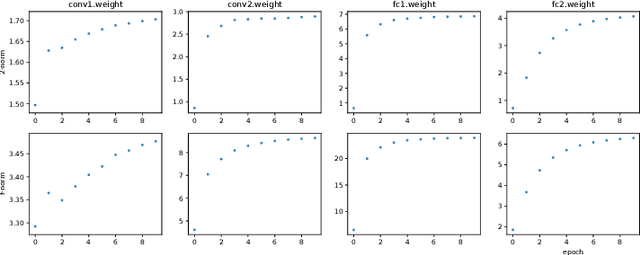
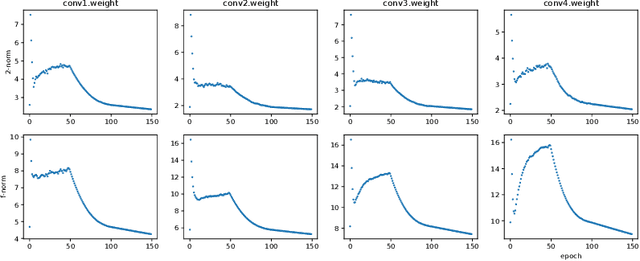
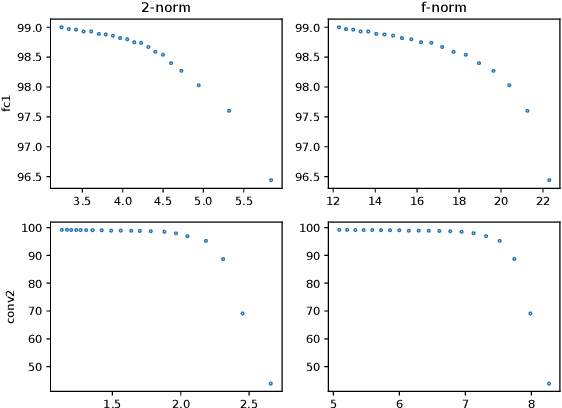
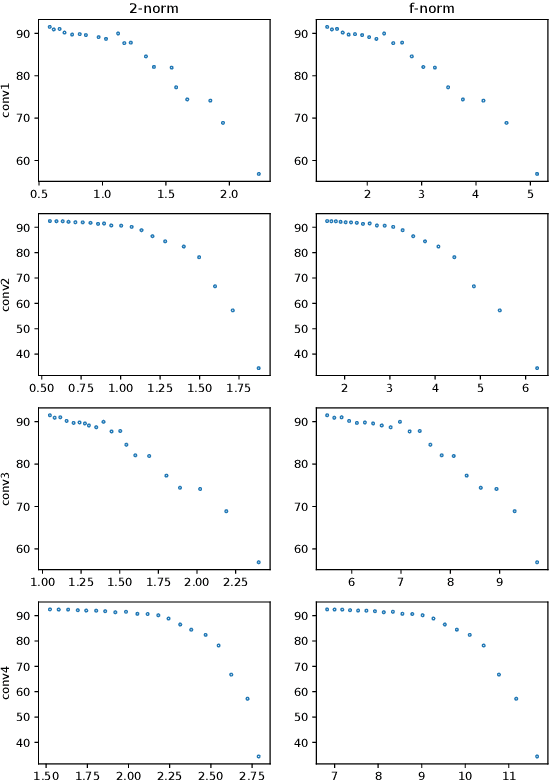
Abstract:Neural networks have achieved remarkable performance in various application domains. Nevertheless, a large number of weights in pre-trained deep neural networks prohibit them from being deployed on smartphones and embedded systems. It is highly desirable to obtain lightweight versions of neural networks for inference in edge devices. Many cost-effective approaches were proposed to prune dense and convolutional layers that are common in deep neural networks and dominant in the parameter space. However, a unified theoretical foundation for the problem mostly is missing. In this paper, we identify the close connection between matrix spectrum learning and neural network training for dense and convolutional layers and argue that weight pruning is essentially a matrix sparsification process to preserve the spectrum. Based on the analysis, we also propose a matrix sparsification algorithm tailored for neural network pruning that yields better pruning result. We carefully design and conduct experiments to support our arguments. Hence we provide a consolidated viewpoint for neural network pruning and enhance the interpretability of deep neural networks by identifying and preserving the critical neural weights.
MLCTR: A Fast Scalable Coupled Tensor Completion Based on Multi-Layer Non-Linear Matrix Factorization
Sep 04, 2021



Abstract:Firms earning prediction plays a vital role in investment decisions, dividends expectation, and share price. It often involves multiple tensor-compatible datasets with non-linear multi-way relationships, spatiotemporal structures, and different levels of sparsity. Current non-linear tensor completion algorithms tend to learn noisy embedding and incur overfitting. This paper focuses on the embedding learning aspect of the tensor completion problem and proposes a new multi-layer neural network architecture for tensor factorization and completion (MLCTR). The network architecture entails multiple advantages: a series of low-rank matrix factorizations (MF) building blocks to minimize overfitting, interleaved transfer functions in each layer for non-linearity, and by-pass connections to reduce the gradient diminishing problem and increase the depths of neural networks. Furthermore, the model employs Stochastic Gradient Descent(SGD) based optimization for fast convergence in training. Our algorithm is highly efficient for imputing missing values in the EPS data. Experiments confirm that our strategy of incorporating non-linearity in factor matrices demonstrates impressive performance in embedding learning and end-to-end tensor models, and outperforms approaches with non-linearity in the phase of reconstructing tensors from factor matrices.
Enhancing Domain Word Embedding via Latent Semantic Imputation
May 21, 2019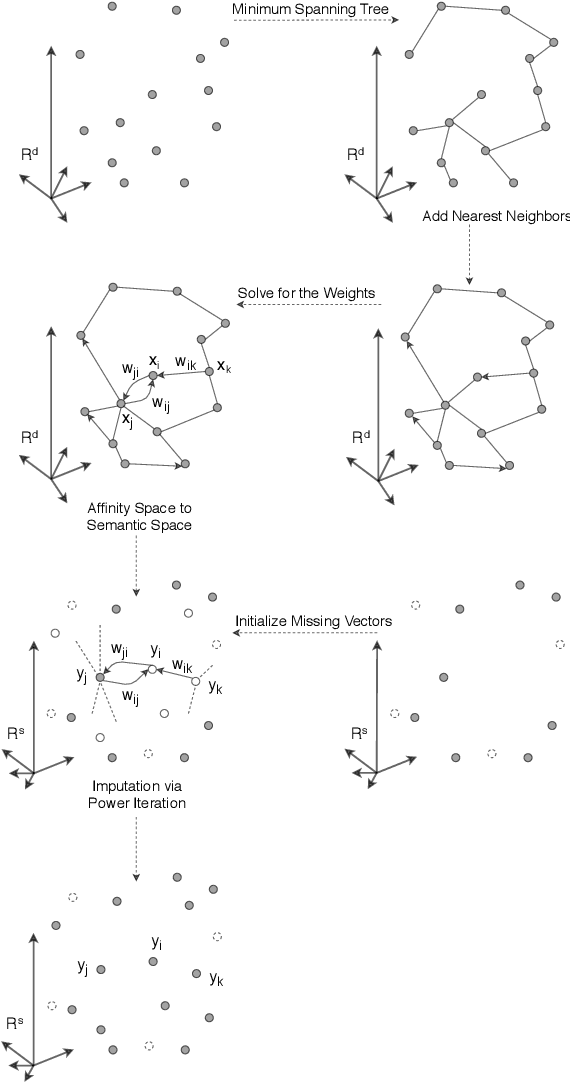
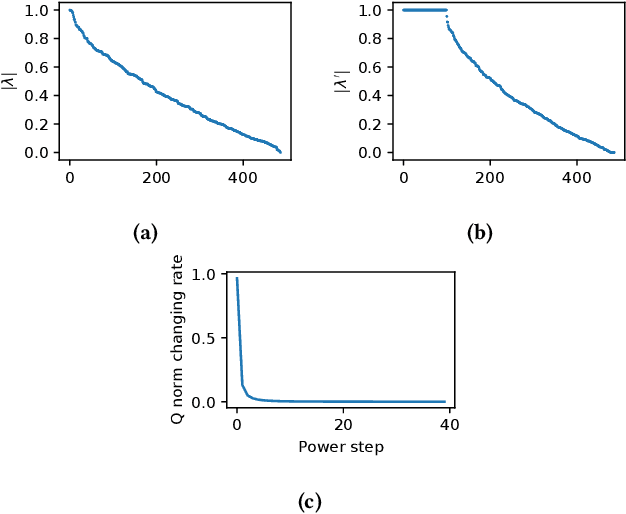
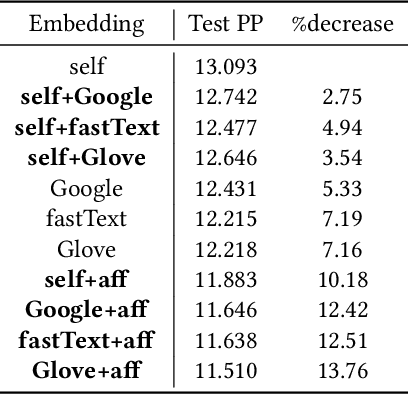
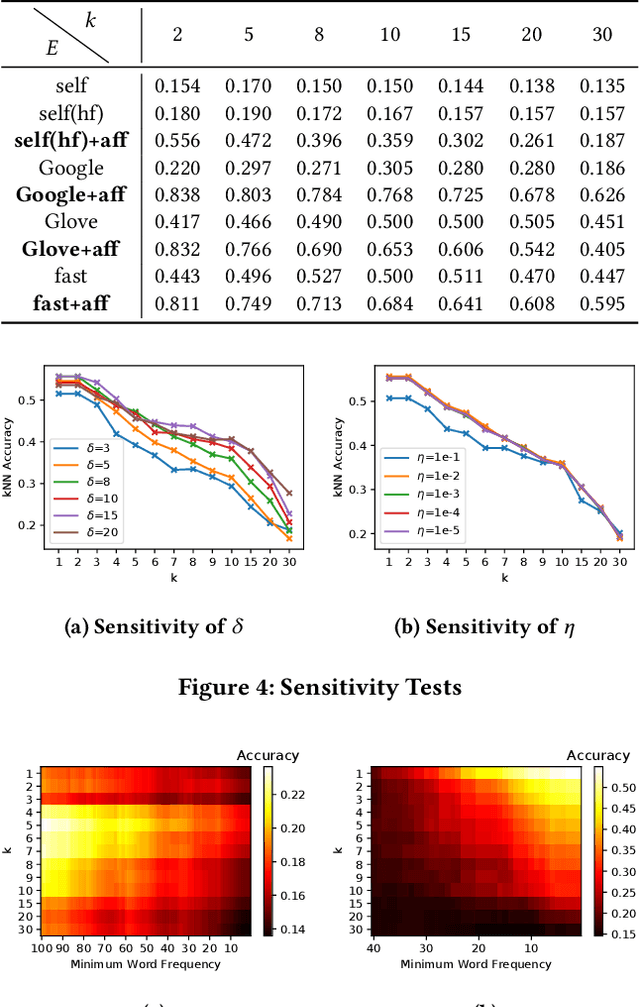
Abstract:We present a novel method named Latent Semantic Imputation (LSI) to transfer external knowledge into semantic space for enhancing word embedding. The method integrates graph theory to extract the latent manifold structure of the entities in the affinity space and leverages non-negative least squares with standard simplex constraints and power iteration method to derive spectral embeddings. It provides an effective and efficient approach to combining entity representations defined in different Euclidean spaces. Specifically, our approach generates and imputes reliable embedding vectors for low-frequency words in the semantic space and benefits downstream language tasks that depend on word embedding. We conduct comprehensive experiments on a carefully designed classification problem and language modeling and demonstrate the superiority of the enhanced embedding via LSI over several well-known benchmark embeddings. We also confirm the consistency of the results under different parameter settings of our method.
X-ray Scattering Image Classification Using Deep Learning
Nov 10, 2016


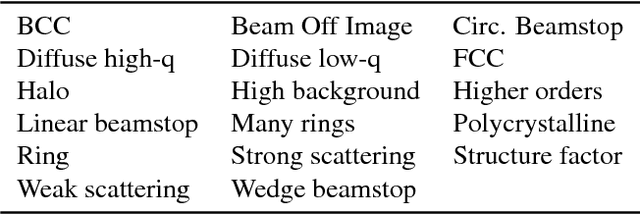
Abstract:Visual inspection of x-ray scattering images is a powerful technique for probing the physical structure of materials at the molecular scale. In this paper, we explore the use of deep learning to develop methods for automatically analyzing x-ray scattering images. In particular, we apply Convolutional Neural Networks and Convolutional Autoencoders for x-ray scattering image classification. To acquire enough training data for deep learning, we use simulation software to generate synthetic x-ray scattering images. Experiments show that deep learning methods outperform previously published methods by 10\% on synthetic and real datasets.
 Add to Chrome
Add to Chrome Add to Firefox
Add to Firefox Add to Edge
Add to Edge